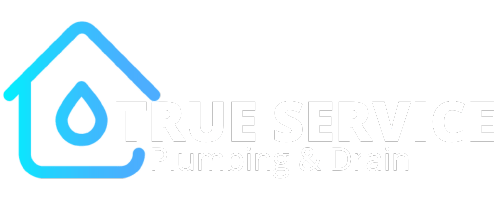Knowing how to keep pipes from freezing can save you from costly repairs and potential water damage.
Winter’s freezing temperatures can wreak havoc on your plumbing system, but the good news is that with the right steps, you can prevent pipes from freezing and bursting.
In this guide, we’ll show you practical, easy-to-implement strategies to protect your home’s plumbing and keep your water flowing, even in the coldest months.
Understanding the Risks of Frozen Pipes
Why Do Pipes Freeze?
When temperatures drop, the water inside your pipes begins to freeze. As water freezes, it expands, which puts enormous pressure on the pipe walls.
This expansion can cause the pipe to burst, leading to flooding and significant damage. Even a small crack in a pipe can leak up to 250 gallons of water per day!
Who Is Most at Risk?
Homeowners in colder climates are most vulnerable to frozen pipes, but even those in milder areas aren’t immune.
Homes with uninsulated pipes, particularly in basements, attics, or garages, are at higher risk.
If your plumbing runs along exterior walls, these pipes are more likely to freeze than interior ones.
What Happens When Pipes Burst?
When a pipe bursts, it can cause extensive damage to your home’s structure and belongings.
Beyond the immediate flooding, it can also lead to mold growth, electrical issues, and costly repairs.
Preventing pipes from freezing is essential to avoid this plumbing nightmare.
Signs Your Pipes Might Be Freezing
When Should You Be Concerned?
Knowing the early signs of freezing pipes can help you act before it’s too late.
If you notice reduced water flow or no water coming from your taps on a cold day, it could be a sign of frozen pipes.
Additionally, strange noises like whistling or banging in your plumbing system may indicate that ice is forming inside the pipes.
How to Inspect Vulnerable Areas
It’s important to check exposed pipes in areas like the basement, attic, crawl space, and garage. Look for frost on the exterior of pipes, which is a clear indicator that they may be freezing. You can also feel the pipes to see if they’re cold to the touch, even when the home’s heat is on.
The Best Ways to Prevent Frozen Pipes
Where Are Pipes Most Vulnerable?
Pipes running through unheated spaces are the most vulnerable to freezing.
These include pipes in basements, attics, garages, and crawl spaces, as well as any plumbing that’s close to exterior walls.
Homeowners should focus their efforts on protecting these high-risk areas.
What Can You Do to Prevent Frozen Pipes?
Here are some simple, effective ways to prevent your pipes from freezing:
- Insulate Pipes: Wrap exposed pipes with foam or fiberglass insulation. This is especially important for pipes in unheated areas.
- Seal Leaks: Use caulk or foam to seal any cracks or openings around doors, windows, and where pipes enter the home. This helps keep cold air out and warm air in.
- Keep the Heat On: Always keep your home’s heating system on, even when you’re away. Set the thermostat to at least 55°F to prevent freezing.
- Open Cabinet Doors: For kitchen and bathroom sinks, open cabinet doors to allow warm air to circulate around the pipes.
- Allow Faucets to Drip: During extreme cold, leave a faucet dripping slightly. Moving water is less likely to freeze, and this can relieve pressure in the pipes if they do start to freeze.
When and How to Winterize Your Plumbing System
When to Prepare Your Pipes for Winter
The best time to start winterizing your pipes is in the fall, before the first freeze hits.
Don’t wait until winter is in full swing—taking early action can prevent expensive damage later on.
How to Winterize Plumbing
Here’s a step-by-step guide to help homeowners winterize their plumbing and protect it from freezing temperatures:
- Disconnect and Drain Outdoor Hoses: Water left in hoses can freeze and cause connected pipes to burst. Disconnect all outdoor hoses and store them for the winter.
- Shut Off and Drain Outdoor Faucets: Turn off the water supply to outdoor faucets and drain them completely.
- Install Pipe Insulation: Add pipe insulation or heat tape to exposed pipes, especially those in unheated areas.
- Drain Your Sprinkler System: If you have an outdoor sprinkler system, drain it before the cold sets in.
What to Do if Your Pipes Freeze
How to Thaw Frozen Pipes
If you suspect your pipes have frozen, act fast to prevent a burst. Follow these steps to thaw frozen pipes safely:
- Turn Off the Water: First, shut off the water supply to the frozen pipe to reduce pressure and minimize the risk of a burst.
- Apply Heat: Use a hairdryer, heating pad, or space heater to warm the frozen section of the pipe. Start near the faucet and work your way back along the pipe.
- Don’t Use Open Flames: Never use a blowtorch or any open flame to thaw pipes. This could cause a fire or damage the pipe.
- Keep the Faucet Open: As the pipe begins to thaw, water will start to flow. Keep the faucet open to help relieve pressure.
Who to Call for Help
If you’re unable to thaw a pipe on your own or if you suspect a pipe has burst, it’s time to call a professional plumber.
True Service Plumbing offers 24/7 emergency services to handle frozen or burst pipes quickly and efficiently.
Long-Term Solutions for Pipe Protection
What Upgrades Can Protect Your Plumbing Long-Term?
While short-term fixes can prevent frozen pipes, long-term solutions provide ongoing protection. Consider these upgrades:
- Install Frost-Free Faucets: Replace standard outdoor faucets with frost-free models to reduce the risk of freezing.
- Upgrade to PEX Pipes: PEX piping is more flexible than copper and less likely to burst if frozen. If you’re doing major renovations, consider upgrading your plumbing system to PEX.
- Add Extra Insulation: Insulating exterior walls, attics, and basements can help maintain a stable temperature around your pipes.
Conclusion
Keeping your pipes from freezing is crucial to avoid costly water damage and repairs.
By taking proactive steps to insulate pipes, seal leaks, and maintain heat, you can protect your home’s plumbing system all winter long.
Remember, it’s always easier and cheaper to prevent frozen pipes than to deal with the aftermath of a burst.
True Service Plumbing: Your Partner in Protecting Pipes
When it comes to preventing frozen pipes in Toronto and the GTA, True Service Plumbing is here to help.
Our licensed professionals provide expert advice, winterization services, and emergency repairs to keep your home’s plumbing safe from freezing temperatures.
Don’t wait for a plumbing emergency to act. Contact True Service Plumbing today to schedule a consultation and ensure your pipes are protected this winter.


